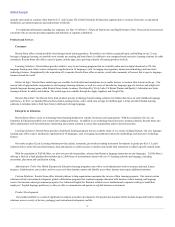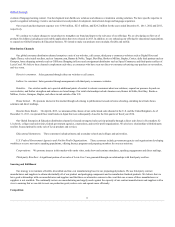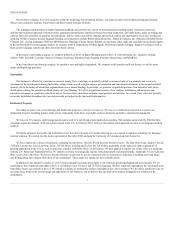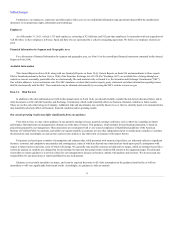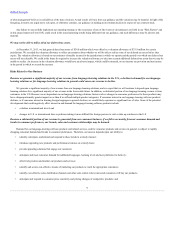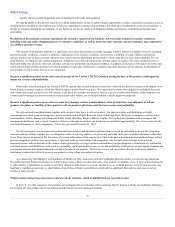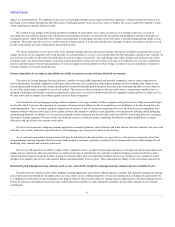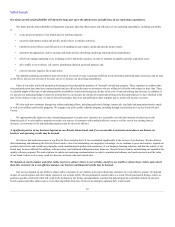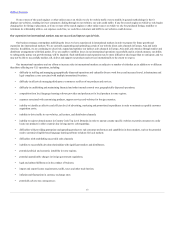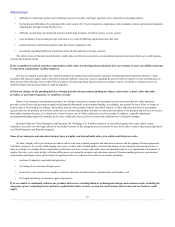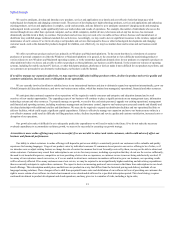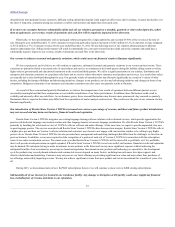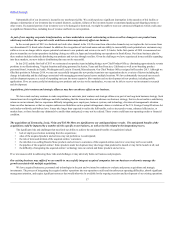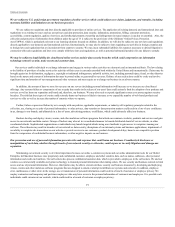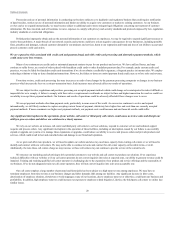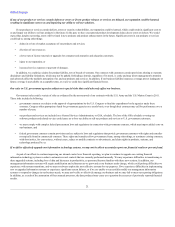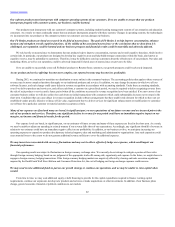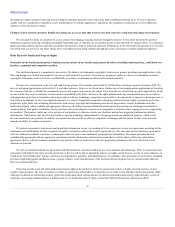Rosetta Stone 2013 Annual Report Download - page 16
Download and view the complete annual report
Please find page 16 of the 2013 Rosetta Stone annual report below. You can navigate through the pages in the report by either clicking on the pages listed below, or by using the keyword search tool below to find specific information within the annual report.
Table of Contents
We need to anticipate, develop and introduce new products, services and applications on a timely and cost-effective basis that keeps pace with
technological developments and changing customer needs. The process of developing new high technology products, services and applications and enhancing
existing products, services and applications is complex, costly and uncertain, and any failure by us to anticipate customers' changing needs and emerging
technological trends accurately could significantly harm our market share and results of operations. For example, the number of individuals who access the
internet through devices other than a personal computer, such as tablet computers, mobile devices, televisions and set-top box devices, has increased
dramatically and this trend is likely to continue. Our products and services may not work or be viewable on these devices because each manufacturer or
distributor may establish unique technical standards for such devices. Accordingly, we may need to devote significant resources to the creation, support and
maintenance of such versions. If we fail to develop or sell products and services that respond to these or other technological developments and changing
customer needs, such as the demand for products designed for children, cost effectively, we may lose market share and revenue and our business could
suffer.
We offer our software products and services primarily on Windows and Macintosh platforms. To the extent that there is a slowdown of customer
purchases of personal computers on either the Windows or Macintosh platform or in general, to the extent that we have difficulty transitioning product or
version releases to new Windows and Macintosh operating systems, or to the extent that significant demand arises for our products or competitive products on
other platforms before we choose and are able to offer our products on these platforms, our business could be harmed. To the extent new releases of operating
systems, including for mobile and non-PC devices, or other third-party products, platforms or devices make it more difficult for our products to perform, and
our customers are persuaded to use alternative technologies, our business could be harmed.
If we fail to manage our expansion effectively, we may experience difficulty in filling purchase orders, declines in product and service quality and
customer satisfaction, increased costs or disruption in our operations.
We are currently involved in efforts to stabilize losses in our international business and aim to ultimately expand our operations internationally, grow our
Global Enterprise & Education business, and move our business more online, which has strained our managerial, operational, financial and other resources.
We anticipate that continued expansion of our operations will be required to satisfy consumer and enterprise and education demand and to avail
ourselves of new market opportunities. The expanding scope of our business will continue to place a significant strain on our management team, information
technology systems and other resources. To properly manage our growth, we need to hire and retain personnel, upgrade our existing operational, management
and financial and reporting systems, including warehouse management and inventory control, improve our business processes and controls and identify and
develop relationships with additional retailers and distributors. We may also be required to expand our distribution facilities and our operational facilities or
add new facilities, which could require significant capital expenditures. Failure to effectively manage our expansion and move our business more online in a
cost-effective manner could result in difficulty in filling purchase orders, declines in product and service quality and customer satisfaction, increased costs or
disruption of our operations.
Our growth also makes it difficult for us to adequately predict the expenditures we will need to make in the future. If we do not make the necessary
overhead expenditures to accommodate our future growth, we may not be successful in executing our growth strategy.
A transition to more online offerings may not be successful, if we are not able to attract and retain customers, which could adversely affect our
business and financial performance.
Our ability to attract customers to online offerings will depend in part on our ability to consistently provide our customers with a valuable and quality
experience for learning languages. Usage of our product varies by individual consumer. If consumers do not perceive our service offering to be of value, or if
we introduce new or adjust existing features or change the mix of content in a manner that is not favorably received by them, we may not be able to attract and
retain customers. Customers may cancel their subscription to our service for many reasons, including a perception that they do not use the service sufficiently,
the need to cut household expenses, competitive services providing a better value or experience, or customer service issues not being satisfactorily resolved. If
too many of our customers cancel our service, or if we are unable to attract new customers in numbers sufficient to grow our business, our operating results
will be adversely affected. If too many customers cancel our service, we may be required to incur significantly higher marketing and advertising expenditures
than we currently anticipate to replace these customers. We expect to derive an increasing portion of our revenues in the future from subscriptions to our cloud-
based offerings. This subscription model prices and delivers our products in a way that differs from the historical pricing and delivery methods of our
language learning solutions. These changes reflect a shift from perpetual license sales and distribution of our software in favor of providing our customers the
right to access certain of our software in a hosted environment or use downloaded software for a specified subscription period. This cloud strategy requires
continued investment in product development and cloud operations, and may give rise to a number of risks, including a lag in sales,
15


